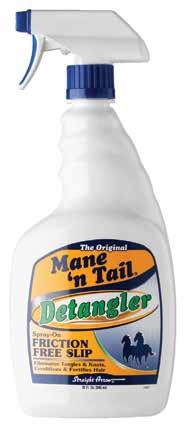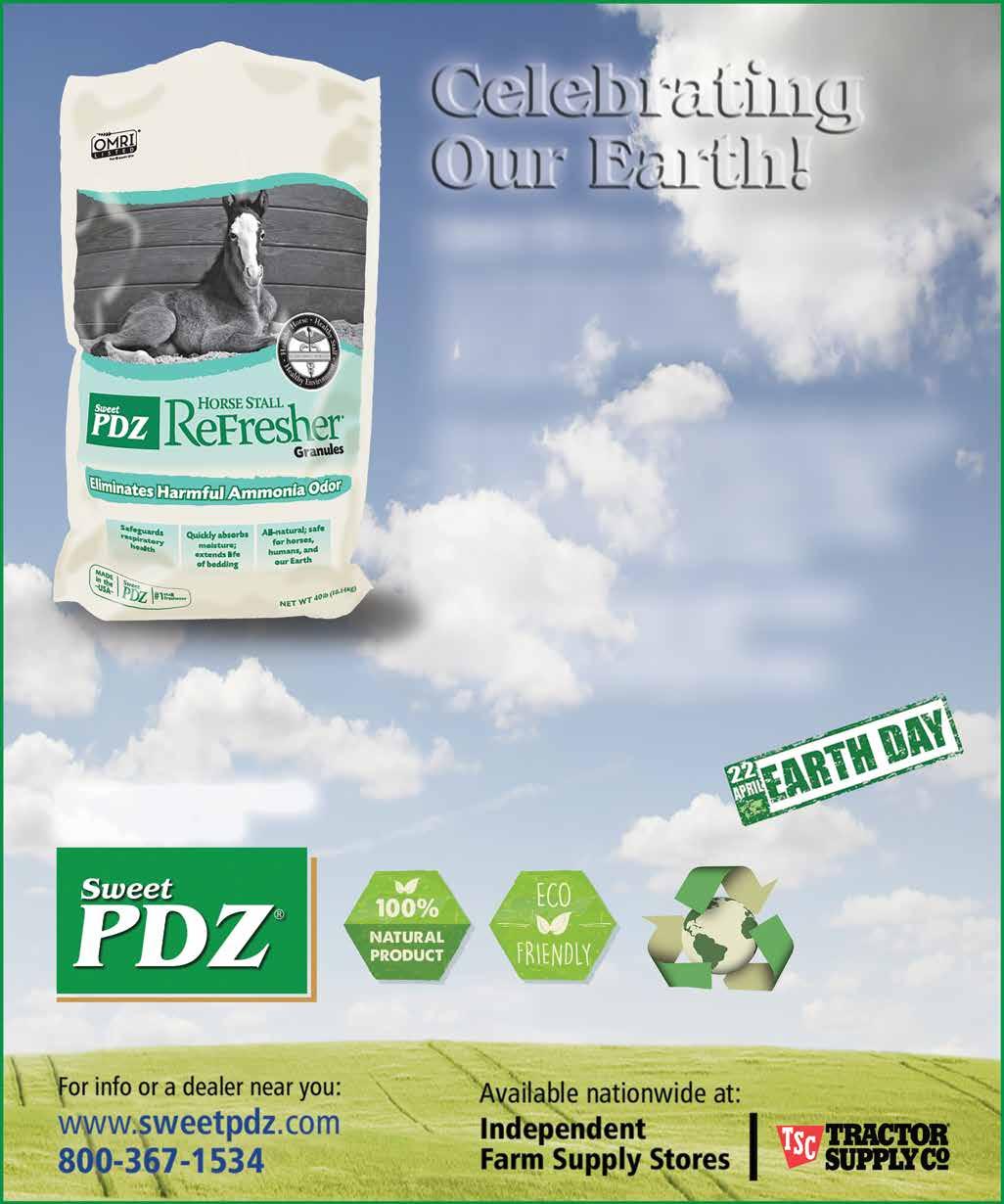
The Nutrition Issue: Keeping Horses
Healthy, Happy and in Peak Condition




Page 4:
Publisher’s Note
Three Different Horses, Three Different Needs, Three Different Diets
By Lauren AbbottPage 6:
Horse Health: Nutrition Focus
Crunch Time! Adding More “Groceries” to the Developing Equine Athlete
By Kyla Szemplinski,MS | UT TSU Extension Shelby County
Page 8:
Horse Health: Nutrition Focus
The Silent Saboteur in Equestrian Excellence: Your Horse’s Dental Health
By Lauren AbbottPage 10:
Horse Health: Nutrition Focus
Tummy Troubles: How Transport and Exercise Stress Can Affect Horse’s Gut Microflora
By Kyla Szemplinski,MS | UT TSU Extension Shelby County
Pg. 11
Greener Pastures
Agent P: Parasites
Pasture Grass Parasite Management
By Kyla Szemplinski,MS | UT TSU Extension Shelby County
Page 17:
Training & Horsemanship
Untracking and Backing for Balance: A Training Necessity
By Lauren AbbottPage 19:
Competition Zone
MSQHA and WTQHA Collaborate to Bring “High Times at Tunica” to the Paul Battle Arena in April.
By Lauren AbbottPage 20:
Competition Zone
Volunteer Ranch Horse Association Highlights
Photos by Gary Cox
Page 23:
Competition Zone
The 25th Anniversary of the Gulf Coast Winter Classic Photos by Eye Was Here Photography
Page 24-27:
Calendar & Marketplace
Equestrian Businesses, Products & Services

Page 5:
Q&A
By
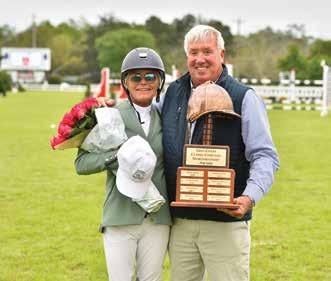

Volume 34 | Number 8
Publisher & President:
Lauren Abbott
labbott@thehorsereview.com
901- 279- 4634
Business Office:
Andrea Winfrey: andrea@mshorsereview.com
Advertising & Marketing
Anna Harrington Anna@thehorsereview.com
Editorial:
Ashlee Pigford: Managing Editor
Gary Cox: Contributing Photographer
Grace Netter: Contributing Writer
Paul Nolte: Contributing Photographer
Rachel Ledet: Contributing Writer
Design & Production
Melissa Williams
Amber Murphy
Mailing: P.O. Box 451
Nesbit, MS 38651
Subscriptions
Subscriptions are $60 annually for print and digital access. email: info@mshorsereview.com
To submit
We

For the majority of my life I have managed my horses’ diets and nutrition. When I graduated college and moved home I boarded my horse, Gage, at a family farm that was self care. This meant that I had to supply his feed, and for many days I was responsible for feeding him, especially on the weekends.
Gage was four, turning five, at that time so I was learning how to fuel my young Thoroughbred who I was cross training for Eventing and Jumping. He was still growing, and we hacked over a 100 acres five to six days a week. He required a diet that did not make him too hot, but provided enough fat and protein to fuel our long hacking sessions, and his muscle development. He was, thankfully, an easy keeper compared to many Thoroughbreds, and he has always had a cool and level headed personality, rarely getting anxious at any adjustment in his training.
Fast forward to the present day. I have my own farm and three horses. I am 100% responsible for their care, management, training schedule and diets, and I love the challenge. I am able to pull the knowledge from my previous veterinary tech days into how I care for my horses. All three are at different life stages, have different needs and require three different diets.
Gage is now 23- years- old and retired from riding. There might be the occasional day that I ride him, at a walk around the property, but his biggest nutritional challenge is his degenerative megaesophagus, which I have mentioned before in previous Publisher’s Notes. His megaesophagus has evolved to the point where he can no longer eat hay. A horse that can’t eat hay has many challenges, but one that is 23, can’t eat hay, that also has partial esophagus paralysis, along with a large diverticulitis in his throat with a stricture above it means: he chokes, and aspirates. The way I manage his nutrition and the way he is fed is pivotal to his existence at this moment in time.
Josie, my Mustang, is about 15-years- old. Just last year I noticed he was getting random fat pockets above his tail bone, on his sides, and under his tummy in his groin area. As a large pony, and a Mustang, his metabolism is very different from all the Thoroughbreds I have owned in the past. However, he was showing me physical signs of equine metabolic syndrome. Due to Gage not being able to eat hay we planted cool season grass in the pasture so Gage could have grass in the cooler months. However, cool season grasses have higher carbohydrates and sugars known as fructans, which if overgrazed by horses with metabolic syndromes can lead to laminitis. Great!
of grain, high in carbohydrates and sugar to provide the fuel he needed as a peak racehorse. During his transition he lost a good amount of weight and muscle tone. I had to supplement with ulcer preventatives and fat, and transitioned away from the high carbohydrate grain to help ease some anxiousness and excitement he had. Since the day he came off the trailer he has had soft stools. Ulcer supplements and probiotics are two major supplements I know he must have regularly. He is also very big, standing at 17.1, and he can literally drop weight overnight. I know his tummy is extremely sensitive and I feel his hindgut has something “ticky” about it.
So I have three horses, Gage is retired, Josie is being brought into low level exercise, and Kevin is my performance horse. Gage cannot eat hay, Josie cannot have high starch feed and needs management on lush grass, while Kevin needs high amounts of feed and supplements to not only maintain weight, but prevent potential ulcer and gastric distress, and enough of the right kind of fuel to keep him in performance shape.
When thinking about keeping all three of these very different horses fed properly it can be overwhelming, but it goes back to my younger years, when I had to learn about horse health, care, and management while boarding at a self care barn.
I find nutritional needs and studies fascinating, and I hone in on tiny clues my horses give me when something seems awry with their tummies or overall health and performance. I do believe their diets are key to their health so I take equine nutrition seriously when it comes to my horses. If I only focused on my own nutrition as closely I would be much healthier myself!
This issue focuses on nutrition because, just like humans, every horse needs a personalized diet. Horses have special nutritional needs to help balance their overall health and performance levels. The supplements that I give Gage are different from the supplements Kevin receives. The grain Josie gets is very different from the grain Kevin gets. The foundations of their diets are forage, but the way I feed them, and what I feed them is directly tied to their individual needs.
Whether you are responsible for your horses’ diets or you rely on your boarding and training facility to keep your horse in peak condition, this issue is to encourage all horse owners and riders to educate themselves on their mounts’ unique nutritional needs. Discuss diet changes with equine nutritionists, veterinarians, and trainers. Research NSC levels in the grain and hay you give to your overweight horse. Evaluate the level of carbohydrates and sugars your high strung horse receives. Understand how forage keeps everything moving properly in your horse’s gut. And most importantly hone in on your horse’s behavior and body condition, especially during competition season.
Remember, “You are What you Eat,” or in this case, your horse is what he/ she eats, and if you are noticing any issues with your horse’s weight, behavior, or even energy take a closer look at his/ her nutritional plan. Sometimes this can be the best place to start in order to get the most out of your horse.
Published by
Kevin, my seven- year- old off the track Thoroughbred is now thrown into the mix. Kevin raced until he was four. He came to me track fit, meaning very lean. I had to transition him off his track feed, which was a diet with large portions

Focus: Nutrition
Section Sponsored By:

 By Aimee Robinson, Valley Vet Supply Director of Editorial
By Aimee Robinson, Valley Vet Supply Director of Editorial
Let’s go back in time to 1821—for sake of entertainment, you can be a horse.
You’re a drafty fellow, and there are fields to plow, wagons and carriages to pull and the five-day workweek has yet to be heard of, especially for a horse out on the farm. Like the steady workhorse that you are, you’re hoofing 10 to 15 hours per day, expending a lot of energy and calories. Your source of food includes grazing low-quality forage (hungry yet?).
Dr. Jyme Nichols, director of nutrition at Stride Animal Health, says this is about the time cereal grains were introduced into horses’ diets. The grains most popular and accessible to feed horses included corn, barley and oats. Knowing horses required higher levels of fiber, as it’s safest for them and their diet, oats had the highest level of fiber and was a natural choice to feed for extra calories that provided horses with extra energy.
“Fast forward to the present day – we have horses kept in stalls or in small turnouts, and they may have very limited hours of riding. That horse that used to work 10, 12 or 14 hours a day now maybe only works an hour a day when we have time to ride them. The rest of the time, they spend eating. But they are still receiving the same concentrated grain meal that we were giving them many years ago when they were working so hard. If you take a high-starch feed like that and overfeed them, you can make a horse very excitable or crazy,” said Dr. Nichols during an interview with Valley Vet Supply.
Equine nutrition is complex – there is no sugar-coating that; however, Dr. Nichols warns there is plenty of “sugar-coating” when it comes to our horse’s grain choices, and that along with high starch are just a few aspects to consider relating to our horse’s nutritional program.
With insight from Dr. Nichols, let’s review top equine nutrition FAQs.
Does my horse need supplements?
The answer to that is never black or white. It depends on what you are doing with your horse; how old your horse is; whether you’re feeding your horse a forage-only diet or whether your horse is on feed. It also depends on if your horse is dealing with certain problems, like if they have arthritis, gut issues or specific needs that are outside of what we would consider ‘normal,’ more basic nutritional needs.
Does protein make horses hot?
No, it doesn’t. It is the starch and sugars in what you are feeding that make horses hot. There is some confusion about protein—it’s commonly thought that horses need more feed, more protein and more nutrients, so we’re going to feed this higher-protein feed. But what owners may not realize, is that when they were feeding that higher-protein feed, they were also feeding more of it. It wasn’t necessarily the high protein that was making the horses become excitable. It was the fact they were feeding a really large volume of a high-starch, high-sugar feed.
Nutritionally, how can I manage or prevent a “hot” horse?
If you have a horse that is naturally more excitable and anxious, one of the better things you can do is look for a diet that is high in fiber and pull your calories from fat sources. Those fat sources are called “cool energy calories,” meaning it gives horses the calories that they need, but it’s not going to make their mind and their attitude hot and excitable. For energetic horses, avoid high starch feeds. Refer to the feed tag for the “NSC,” which is the combination of starch + sugar. “NSC” stands for non-structural carbohydrates. You get to that number by adding the starch number on the feed tag to the sugar level. As a general rule of thumb for feeds considered “low starch,” if you were to add the starch and the sugar together, that number shouldn’t be over 22%.
Can sugars impact certain horse health conditions?
For PPID horses or Cushing’s horses, starch and sugar are really important in the diet to help manage. If you have a horse with a medical sensitivity, such as a horse with
Cushing’s, laminitis or equine metabolic syndrome – the medical sensitivity to sugar means you need to make sure that your NSC is under 12%. After that, you want to make sure you’re feeding at the recommended levels of the feed. If you’re not – and let’s say that particular feed calls for 6 lbs. per day and you’re only feeding those horses 3 lbs. per day, you’re shorting them in important trace minerals or vitamins.
How do you nutritionally manage a horse that ties up frequently?
There is not a generic answer. But keep horses off green grass [which has higher sugar content]; feed low-starch, low-sugar feed; and make sure you have a proper balance of trace minerals, macro nutrients and vitamins. Also, ensure they have daily exercise.
How do I know if my hay is meeting their basic needs?
First off, do a visual check and body con-
dition assessment of your horse. Look at rib cover – you should be able to easily feel but not easily see, ribs. Next, you’ll want to look at the topline. You want the horse’s topline to be essentially flat. If they can hold water on their spine on a rainy day, that tells you they’re in a bit of an excess body condition. But if rain were to pour on them and just run off, and their spine peaks up like a mountain, then that tells you their body condition is probably a bit under. But the most concrete thing you can do is get your hay tested. Getting that information is the most important thing you can do, because forage is the foundation of your horse’s diet and it is so important to understand what you are feeding.
Continue learning, and browse ValleyVet. com for trusted equine supplements from Stride Animal Health and more to support your horse’s health and nutrition.

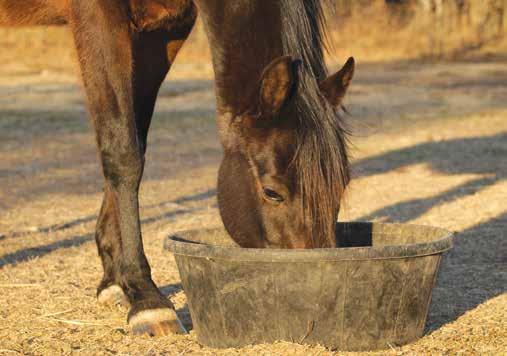 Kyla Szemplinski, MS
UT TSU Shelby County Extension
Kyla Szemplinski, MS
UT TSU Shelby County Extension
It’s the most wonderful time of the year for performance horse owners: show season!
This time of the year brings a mixture of emotions, and in the center of all this are the horses. Horses and riders have been practicing and conditioning over the winter months for peak performance so they can bring home some accolades. Just like the physical training to bring horses up to peak athletic per-
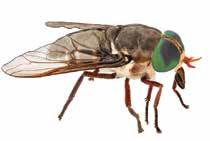
formance is significant, the diet and nutrition that helps fuel your horses’ performance are equally important.
Similar to human athletes when they increase exercise, horses will also need more “groceries” to their diet to supplement the additional energy output and to increase muscle mass. Without proper nutrition, the equine athlete will most likely not develop the athletic physique needed for high performance and exhaust themselves sooner during performance.
Besides workload, owners also need to take into consideration their horse’s age, discipline, breed, training schedule, travel schedule and health history. Nutrition should not only support muscle development but also gut health, respiratory health, post-workout recovery, immunity and electrolyte balance. All these factors need to be evaluated when owners are developing the best possible nutrition plan.
Owners should also maintain an optimal body condition score (fat coverage) since too much or too little fat can negatively affect performance. Ideally, peak performance horses should have a body condition score (BCS) of about 4.5-5 on the 9-point Henneke
scoring system. To check your horse’s body condition score, fat coverage should be evaluated on the following parts of the horse’s body:
• Crest of the Neck
• Withers
• Ribs
• Tailhead
• Along the spine (loin area)
• Behind the elbow
Score each area then average the score. Anything below 4.5 for a peak performance horse is considered too lean which means the horse will have less energy reserves available.
Nutritional requirements for horses depend heavily on your horse’s workload. There are five levels of exercise established by the National Research Council (NRC):
• Maintenance: horses NOT engaged in any exercise program.
• Light Exercise: 1-3 hours per week; 40% walk, 50% trot, 10% canter. Heart rate during work is approximately 80 beats per minute.
• Moderate Exercise: 3-5 hours per week; 30% walk, 55% trot, 10% can-

ter, 5% low jumping, cutting, other skill work. Heart rate during work is approximately 90 beats per minute.
• Heavy Exercise: 4-5 hours per week; 20% walk, 50% trot, 15% canter, 15% gallop, jumping, other skill work. Heart rate during work is approximately 110 beats per minute.
• Very Heavy Exercise: various; ranges from 1 hour per week speed work to 6-12 hours per week slow work. Heart rate during work is about 110-150 beats per minute.
Heart rate is another main factor to consider when determining nutritional requirements, as it determines caloric energy the horse is using during work. Several other factors can also determine caloric needs such as:
• Level of fitness and skill
• Speed
• Breed
• Weight of horse, tack and rider
• Weight being pulled
• Footing
• Temperature
Nutritional Requirement by Exercise
Level:
There are multiple aspects of nutrition that will be affected when a horse undergoes an exercise lifestyle change. These aspects include:
• Digestible Energy: energy available for
digestion and absorption after fecal losses. Expressed as megacalories (mcal) per kg of body weight.
• Protein: required to build and maintain larger muscle mass, support muscle repair and replace nitrogen losses in sweat. Expressed as grams/day.
• Amino Acids: building blocks of protein. Most critical are the essential amino acids since they cannot be made within the body. Expressed as grams/day
• Vitamins and Minerals: important for energy metabolism, immunity support, fluid balance, bone density, nerve impulses. Expressed as mg or IU.
It is recommended that horses receive at least 1% of body weight in high quality forages if at maintenance level, while horses in heavier exercising need to receive close to 1.75%. For horses needing grain, expect to feed about 0.5% of body weight per day for horses at maintenance, while heavier worked horses will be close to 1% of body weight per day.
To summarize feeding the equine athlete, there is no one way to do it correctly. Tons of factors go into developing the best diet to meet your athlete’s needs. Consult with your equine nutritionist and veterinarian about your horse’s lifestyle and how you can best meet your horse’s needs this show season with nutrition.
Section Sponsored By:
For more detailed information about feeding the equine athlete, please visit the following website courtesy of Mad Barn: https://rb.gy/282p0e



 By Lauren Abbott
By Lauren Abbott
hooves, and
In the realm of veterinary care, an often under-appreciated yet integral element in the equation of equine health, nutrition and performance is the regular dental examination of our equine companions.
Dental health plays a great deal of importance in the life and work of horses. From the mechanics of chewing to the subtle cues of dental distress, it is important to have an intimate understanding of your horse’s oral well-being.
To appreciate the significance of dental care, one must first grasp the intricacies of a horse’s feeding behavior. Evolution has crafted the equine’s digestive system for the rigors of forage. Hence, horses constantly produce saliva while their jaw works in an elliptical motion, grinding away at grasses and grains. This repetitive action not only wields the benefits of nutrient extraction but also aids in digestive health, acting as a natural buffer against gastro issues such as ulcers.
However, when dental issues arise, they don’t just affect the mouth; they reverberate throughout the horse’s body. Poor dental health can lead to malnutrition, colic, discomfort, and behavioral changes. This makes regular dental exams more than just a veter-
inary formality but a pivotal component of proper equine management.
Horses are adept at concealing discomfort, a trait that stems from their survival instincts in the wild. Yet, there are signs — subtle and not so — that their teeth may be the trouble.
Changes in weight or body condition, difficulty eating, unexplained drop in performance, and even resistance to the bit during riding are all potential indicators that your horse may be struggling with dental issues. In young horses, malocclusions, or misalignments of teeth, can lead to improper wear and tear. Conversely, aged horses often face the erosion of tooth surfaces or the loss of teeth entirely.
The list of possible dental problems is extensive, ranging from sharp enamel points and overgrowths to more complex issues like periodontal disease and abscesses. Each ailment carries its own set of symptoms, highlighting the need for attentive horse care and professional dental evaluations.
Behavioral changes can be the most apparent sign of dental distress, affecting the horse’s demeanor in various settings. When ridden, a horse with dental pain might flinch away from the bit, toss its head, or show aver-

sion to certain movements. In-hand work can also become a struggle as the horse attempts to communicate its unease through resistance or erratic behavior.
Naturally, such disruptions in performance can become frustrating for both horse and rider, leading to potential miscommunications and a breakdown in the training process. By understanding how dental pain can manifest in the horse’s actions, equestrians can better correlate changes in behavior with potential oral issues and provide the necessary care.
Proactive monitoring of your horse’s dental health requires vigilance. Regular checks for signs of sharp enamel points, missing, or loose teeth can be conducted at home but should always be followed by professional assessments. Veterinarians with equine expertise utilize both manual and technological methods, such as sedated oral exams and dental radiography, to provide a thorough evaluation.
Owners must also be attentive to the horse’s age, as different dental concerns become prevalent at various life stages. This includes vigilance over the growth of permanent teeth in young horses and the rollover of incisors in older equines, which can indicate difficulties in the wear pattern.
If there’s one constant in the care of horses, it’s the power of routine. Regular dental exams should be penciled into the calendar alongside vaccinations and farrier visits. Ne-
glecting the annual check-up, or waiting for symptoms to appear, can result in not only compromised oral health but also detriment to the horse’s overall condition and ability to perform.
Adhering to a structured maintenance routine will not only benefit the horse but also the rider and any stakeholders invested in the animal’s well-being. Prevention and early intervention are pivotal in the equine dental realm, ensuring that minor issues are addressed before they blossom into impediments to performance or — worse — threats to the horse’s vitality.
Horses depend on us for their dental care, as they do for every facet of their well-being. By integrating regular dental examinations into their health regimen, we honor our responsibility to our horses, equipping them for the best quality of life and peak performance.
From the trail to the stables, the health of your horse’s teeth is silently influential, a spinner of the web that supports the grand tapestry of equestrianism. It is our keen observation, timely interventions, and commitment to comprehensive care that will ensure our horse is supported through oral health, which is a key component to nutrition, behavior and performance.
Section Sponsored By:

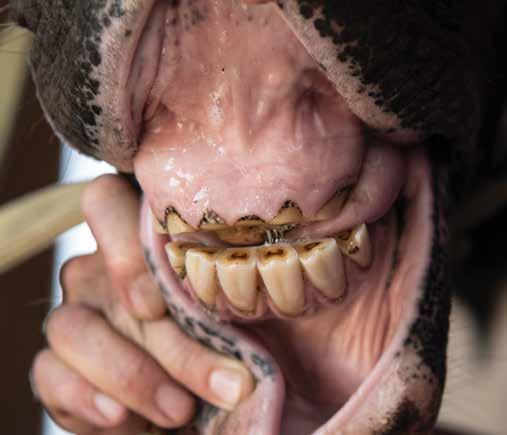
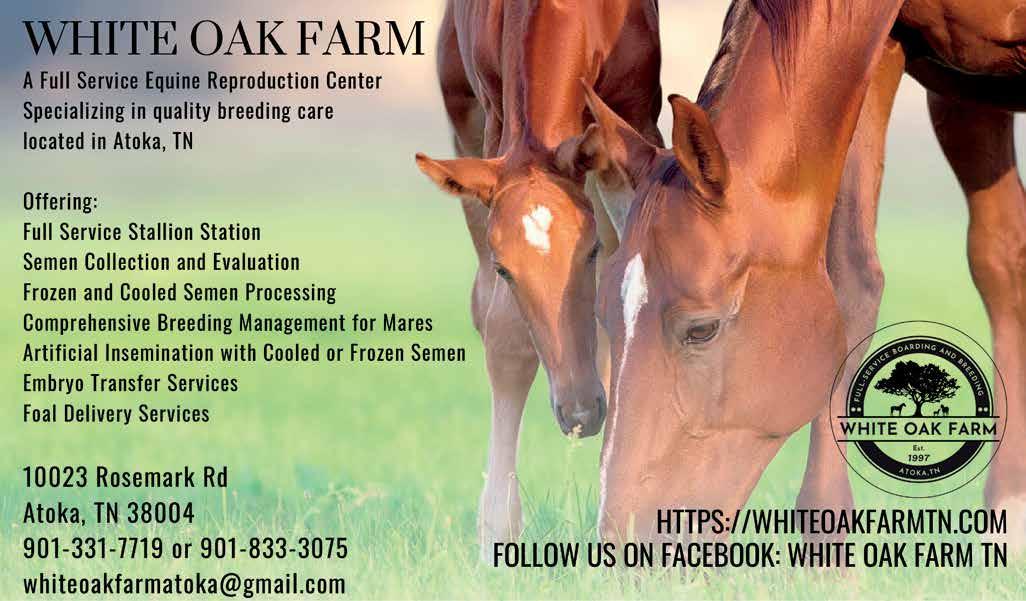
Section Sponsored By:
 Kyla Szemplinski, MS, UT TSU Shelby County Extension
Kyla Szemplinski, MS, UT TSU Shelby County Extension
With the warmer weather and longer days, show season across the United States is in full throttle mode. From local schooling shows, IHSA/IEA, Grand Prix or even the 2024 Paris Olympics, humans and horses are preparing for long bouts of travel which can bring a mixture of emotions. From nervousness to exhaustion to excitement, showing can bring stress to both humans and horses. Horses react to stress similar to humans, but one system is particularly sensitive to stimulation from the transport and exercise: the digestive tract, particularly the hindgut microflora. Stress-induced alterations to this microflora could be detrimental to the horse’s well-being but if appropriate steps are taken, owners can avoid possible complications.
The horse’s hindgut is home to a variety of microflora that consists of bacteria, fungi and protozoa. This microflora is broken down into phylums with the most abundant being Firmicutes, Verrucomicrobia, Bacteroidetes and Spirochaetes, each with a specific function of helping the horse digest feedstuff. Collectively, these microflora phylums are vital to fermentation, an anaerobic (no oxygen) process where microflora breakdown carbohydrates. As the microflora breakdown carbohydrates, volatile fatty acids are produced, which are used for energy to help the horse perform daily functions.
Horses are unique livestock species as they are one of the few to not only be transported but also subjected to regular exercise. The equine hindgut can impact a horse’s physiology because of its complex microbial diversity and the horse’s stress sensitivity. Plenty of equine industry professionals would agree that transportation and exercise stress are major stress factors which could disturb the overall health of the horse, potentially causing behavioral, gastrointestinal, and other physiological issues.
Multiple studies have been conducted over the last few years evaluating how transport and exercise stress affects the delicate nature of gut microflora. Collectively, studies have found certain phylums, particularly Bacteroidetes and Firmicutes, are affected by certain durations of transport time, while others phylums are affected by exercise. In a study done in 2018, it was found that horses subjected to at least 3 hours of transport had significant differences in phylums Bacteroidetes and Firmicutes 48 hours after transport where Bacteroidetes levels increased while Firmicutes levels decreased. Bacteroidetes are an important microflora phylum since it is believed this phylum works with enzymes that target dietary polymers such as cellulose and pectin, two main components in most forages. A significant decrease in Firmicutes could have a negative effect as Firmicutes are believed to be active in carbohydrate and amino acid transport and metabolism. This decrease in Firmicutes levels after transportation stress has the potential to cause gas-
trointestinal issues due to effects on carbohydrate transport and metabolism.
In a 2016 study done with unfit but healthy Standardbred racehorses, it was found that after 12 weeks of intense exercise, there were significant changes in Bacteroidetes, Spirochaetes and Proteobacteria phyla, especially at the beginning of training. The cause of this could be the sudden change in lifestyle, from sedentary to highly active, which in turn affected which phyla needed to change to adjust to potentially increased nutritional needs.
Of course, all horses might not react the same way to all transport and exercise stress internally. There is a potential that horses who have been acclimated to frequent transport and exercise stress might not have significant gut microflora changes, but studies have yet to be conducted with acclimated horses.
If you notice your horse had adverse reactions to transport and exercise, consult with your veterinarian and your horse’s trainer about methods to reduce its stress levels.

Your trainer and veterinarian might recommend that before you and your horse(s) start traveling and increasing exercise for show season to acclimate your horses to those factors first with a designated training plan.
For any further questions about transport and exercise stress contact your county’s Extension office. UT-TSU Shelby County Extension can be reached at 901-752-1207 during normal business hours Monday through Friday 8am-4:30pm CST.
To read more about the mentioned studies, please research the following citations:
Janabi, A.H.D., A.S. Biddle, D. Klein, and K.H. McKeever. “Exercise training-induced changes in the gut microbiota of Standardbred racehorses”. Comparative Exercise Physiology 12.3 (2016): 119-130. https://doi. org/10.3920/CEP160015 Web.
Szemplinski, KL, Thompson A, Cherry N, Guay K, Smith WB, Brady J, Jones T (2020).
Transporting and Exercising unconditioned horses: Effects on microflora populations. J Equine Vet Sci 90: 102988. https:// doi.org/10.1016/j.jevs.2020.102988.
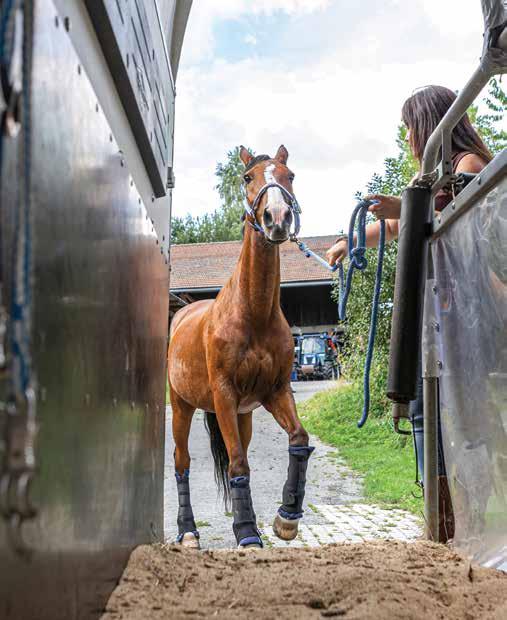
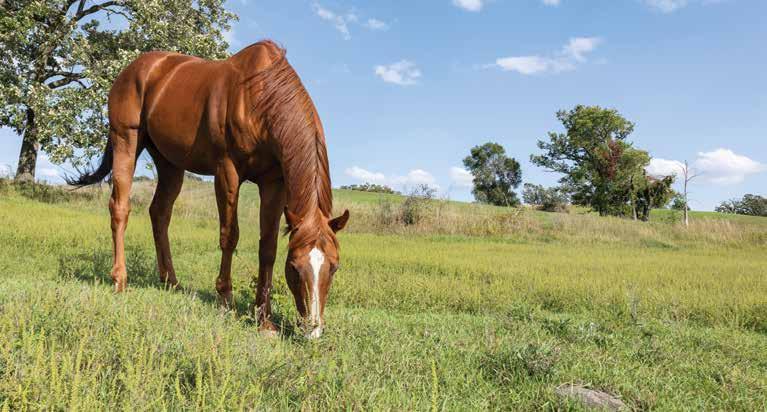 By Kyla Szemplinski, MS, UT TSU Shelby County Extension
By Kyla Szemplinski, MS, UT TSU Shelby County Extension
Lush, spring pastures are pleasing to all horse owners. It can provide your horse with nutritious forages, exercise and enrichment. However, pasture grasses can contain an antagonistic visitor: internal equine parasites. Parasite management is an important step in pasture grass management and with successful techniques, the total amount of parasite eggs and larvae a horse may consume can be reduced. Without proper management, these parasites can cause detrimental effects to your horses and cost owners hundreds in treatment.
Manure is the primary source of parasite transmission. Parasite eggs from an infected horse are passed into the fecal balls. The eggs develop into larvae that live on pasture grasses, using moisture on the grass to crawl up the short blades of grass (under 3 inches tall) so they are more likely to be consumed.
Contrary to belief, parasite eggs and larvae can survive freezing weather and heavy rains act as an effective method for dispersing larvae through pasture grasses due to a protective sheath. Once a horse eats the contaminated grass, the larvae develop within the horse’s digestive tract, primarily in the stomach or intestines. Signs of parasites can vary but the most common symptoms include:
• Weight loss
• Dull, rough looking coat hair
• “Potbelly”
• Diarrhea
• Colic
• Tail rubbing
• Lethargy
Parasite prevention all starts with proper pasture management. Two to three acres should be allotted per horse, and having horses on one acre or less limits exercise, nutritional availability from pasture grasses and increases the chances of parasite exposure due to higher amounts of manure in the area. Before turning horses on pasture, wait until pasture grass is about minimum
six to eight inches (Eight to ten inch height is more ideal) before grazing. Once the grass is grazed down to four to five inches remove horses and mow grasses to three to four inches.. Never mow below three to four inches, as this increases recovery time and damages tall grasses. This type of management can be achieved through rotational grazing practices.
Extreme heat (over 85 degrees Fahrenheit) can also kill parasite eggs but it takes more than just temperatures to kill the eggs. Dragging or harrowing pastures to break up manure piles can expose parasite eggs in manure at those extreme temperatures. Do NOT drag pastures that are being actively grazed on and allow at least two weeks of rest between dragging and turning horses back onto pasture.
Anthelmintic Management and Treatments
Horses typically develop immunity to most internal parasites by two to three years old. However, that does not mean owners should not treat their horses for all possible internal parasite infection. For internal parasite testing, it requires a fecal egg count test
(FEC). FECs are quick and affordable, but owners must submit fresh manure samples to their veterinarian’s office. Once submitted, your veterinarian’s office will conduct the test to determine what types of parasite(s) are present in your horse (if any) and how many eggs per gram of manure. Horses are classified based on their shedding level:
• Low shedder: <200 eggs
• Moderate: 200-500 eggs
• High: >500 eggs
Your veterinarian will guide you to the best course of treatment action with anthelmintic (dewormers). DO NOT randomly give anthelmintics to your horses without knowing what types of parasites are present since some anthelmintics are tailored to certain parasites. This type of deworming can also lead to possible anthelmintic resistance.
Deworming can be done anytime of the year but the American Association of Equine Practitioners (AAEP) recommends deworming in the spring and fall. When deworming, it is important to give the appropriate amount of medication. Read the dewormer label to determine how much to give your horse based on its weight. It is always better to SLIGHTLY overestimate your horse’s weight as too little dewormer will NOT kill all the parasites who can build up resistance. As with any medication, make sure to record your horse’s deworming in their health records.
For further information about types of parasites and which anthelmintic(s) to give, please visit the following UTK info page: https://utia.tennessee.edu/publications/ wp-content/uploads/sites/269/2023/10/ W654.pdf
Any further questions about pasture grass parasite management, please contact your county’s Extension office. UT-TSU Shelby County Extension can be reached at 901752-1207 during normal business hours Monday through Friday 8am-4:30pm CST.

Hidden Star, named after the now-graying star that lies beneath his forelock, waits patiently as a child pours her troubles onto him. Being a therapy pony, it’s his job to be a calm place to come to, but this was not always his speed. “Pogo,” began his career as a three-day event pony, cantering and jumping across fields. Now at 25 this year, it’s more than fate that led him from one career to the next, as Pogo sprung into the hearts of all who met him.
At the beginning, the Brandt family was searching for a new partner for their daughter, Hannah, to learn eventing with. When their trainer, Claire Tyner, found the perfect candidate, it was a no-brainer to bring Pogo back home to Franklin, Tennessee.. Standing at just 12.3 hands, he was the whole package: sweet, safe, and just a little bit spunky. Together, Pogo and Hannah became unstoppable in their eventing competitions.
In the spring of 2016, tragedy struck when Pogo kicked at another horse through a boarded fence, and tore his hock down to
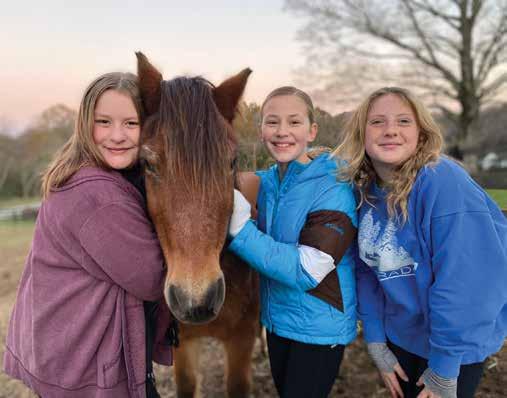
the joint capsule. Determined to give Pogo the best chance at recovery, the Brandt family began his intense rehab. After keeping a
regimen of changing compression bandages, taking care of his wound, and giving him time to heal, Pogo was eventually cleared
to walk under saddle. As he was walking, it soon became obvious that Pogo wanted some sort of job again, and that’s when the Brandts and Claire had an idea.
Carissa Ramsdell ran an equine therapy program, Freedom Reigns Ranch, that was in its very infant stages. At the time she had just been using her own personal horse; however, this job was proving a lot for just one horse. That’s when Carissa got a call from Claire, saying that they had a pony who, while he is not sound for trot and canter, was great with kids at the walk. A safe, steady, quiet kid’s pony was exactly what the program needed, and the agreement for Carissa to care-lease Pogo until his wound had fully healed was made.
This little, bay pony jumped right into session life like he was born for it. He did so phenomenally with everything that was thrown at him, that he soon became a staple at the growing program. Later in the fall, the vet re-evaluated him, and Pogo had rehabbed 100% sound. Clarissa said that this was a testament to the amazing care that the Brandts had provided. While thrilled for his recovery, Carissa was also sad to realize that this meant that the Brandts would be taking

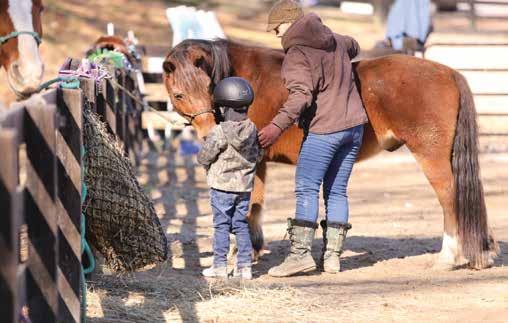
Pogo back to continue competition. However, on the nonprofit fundraising day called “Giving Tuesday,” Carissa received a call that The Brandts were donating Pogo to the program. They acknowledged that he had excelled in the therapy work, and that was where he belonged.
What made Pogo so great at showing someone the ropes of eventing was that he was just so steady, calm, and quiet. This is exactly the same reason why he shines at his job as a therapy pony. Even though he can be silly in the field with the other horses, the moment a child is leading him, he knows it’s his job. This is what gained Pogo a fan club of little girls that love and dote all over him, and in return he gives the children at the farm that first experience of what it means to love a horse. He’s usually the first pony they get to ride, providing an approachable and kind demeanor that the participants might not be used to. He becomes a steady rock that can help children realize that they can have courage to outrun whatever they’re facing. Pogo is a source of fun and joy, which is what he’s always been.
Although Pogo made a full recovery, he still has the scar from his injury running along his leg. This has become a pivotal part of how he touches the lives of those in therapy with him, as it is used as a reminder to show that everyone has scars, but can work through them and go on to do awesome things.
Carissa’s plan for Pogo is for him to continue enjoying his life as a therapy pony. He’s miraculously sound without any maintenance, and as long as he’s happy he’ll keep loving little kids, and being the steady friend that they need during tough times.
Freedom Reigns Ranch, based in Columbia, Tennessee, is a free-of-charge, faithbased mentorship program that uses horses to help children and young adults who are going through trauma. If you are interested in more information, or would like to volunteer, please visit their website at https:// www.freedomreignsranch.com/. They are hosting an upcoming fundraising show this month, happening April 20th-21st, at Walnut Trace Farm.

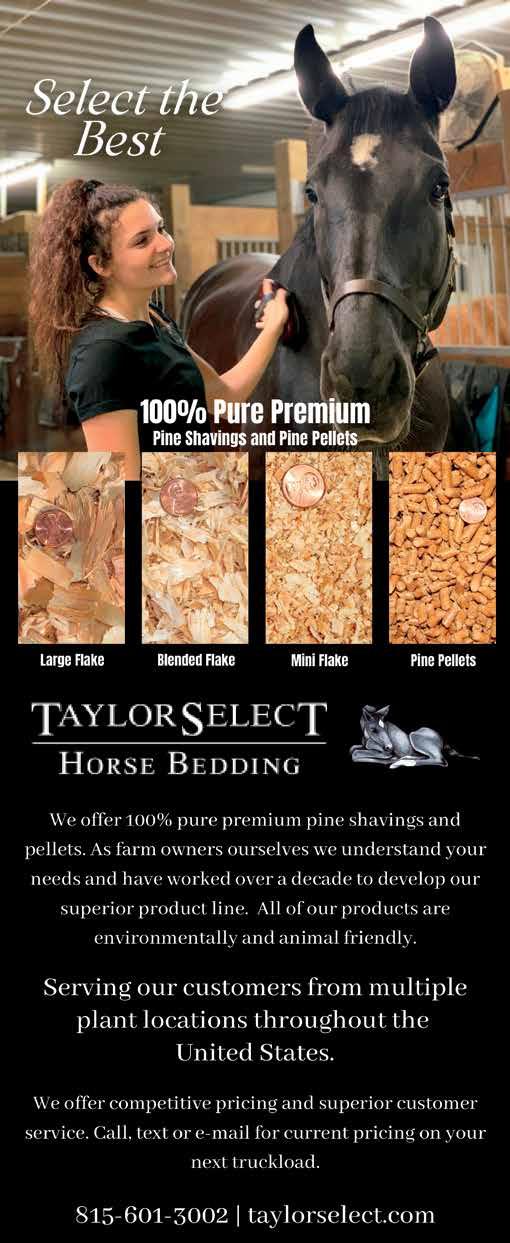

Holly Shepherd of Grand Bay, AL is the recipient of the 2024 prestigious Gulf Coast Winter Classic’s Sportsmanship Award. This accolade is in recognition of her unwavering support and significant contributions to the equestrian community over the last 26 years.
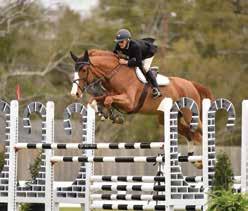

Holly Shepherd has become a cornerstone of the Gulf Coast Winter Classics, demonstrating unparalleled dedication to the sport of horse riding. Notably, she undertakes as many as 35 trips a day in the show ring, showcasing her remarkable talent and resilience. Holly’s commitment extends beyond her personal achievements as she also shows five Grand Prix horses and imparts her knowledge to numerous students each year.
The Sportsmanship Award is bestowed upon individuals who exemplify spirit, in-

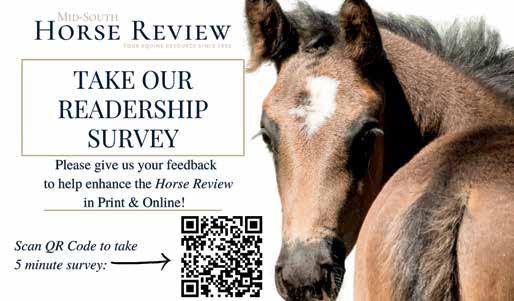
tegrity, and sportsmanship, both in and out of the competition arena and voted upon by the staff of the horse show. Holly’s positive attitude, mentorship, and dedication to equestrian sports have made her a beloved figure and an inspiration to many within the community.
“We are thrilled to honor Holly Shepherd with the Sportsmanship Award,” said Bob Bell, President of the Gulf Coast Winter Classics. “Her contributions to the equestrian community and her unwavering spirit embody the very essence of what this award
represents. Holly’s dedication to her students and the sport at large has not only elevated the competition but has also fostered a nurturing and inclusive environment for all participants.”
Holly’s achievements and her positive influence on the Gulf Coast Winter Classics and the wider equestrian community will be celebrated during a special ceremony held in her honor.
For more information about the Gulf Coast Winter Classics, please visit www. gulfcoastclassiccompany.com
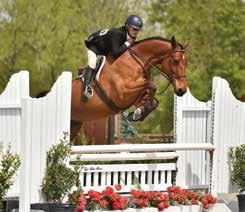


Horseback riding is often likened to a dance, a delicate partnership between horse and rider where every step is in tune with the other. Yet, unlike spontaneous human dance where steps are often improvised, equine balance and movement are far more intricate and intentional, showcasing the graceful interplay between the animal’s raw strength and the rider’s guidance. For equestrians and trainers alike, understanding how to enhance a horse’s balance from its core is pivotal for building a successful partnership and unlocking a horse’s full potential.
Before a rider can dream of performing rhythmic dressage steps at the speed of thought or navigating treacherous cross-country terrains, the very foundation of equine prowess lies in balance. Equine balance refers to the horse’s ability to maintain an upright posture and equilibrium, distributing its weight correctly across all four legs and, more crucially, to manipulate its body’s center of gravity with the precision of a master acrobat – and no, we’re not talking about those majestic circus performers.
In real life, and very much in the equestrian world, a horse’s balance isn’t just an aesthetic quality. It’s a fundamental physical attribute that enables horses to perform athletic feats with ease and without strain. Whether it’s changing gaits, making sharp turns, or executing collected movements, balance is their bedrock. Without it, horses would be akin to bodybuilders without balance, all brawn and no finesse.
Teaching a horse to untrack, often referred to as disengaging the hindquarters, involves the release of energy from the horse’s engine – the hind legs. When untracking the hindquarters, a horse steps its hind legs underneath its body, crossing from left to right or vice versa. This movement is essential as it allows the rider to transfer the horse’s weight back, thus freeing the forehand and promoting a more balanced and controlled movement. To achieve untracking practice with your horse in-hand first and then move to under saddle.
In-hand training or groundwork familiarizes the horse with the idea of untracking its hindquarters. In this phase, the horse will learn the basics of responding to cues that will serve as the precursors to the more demanding movement under saddle. The handler will stand by the horse’s side and apply pressure through body language to the site
where the rider’s leg would normally ask for the movement. Simultaneously, a very light rein or lead contact will signal the direction in which to untrack. Training tools like flags can serve as an extension of your energy. Practice the steps to untracking the hindquarters until you and your horse are both calm and in sync with your cues and asks.
Translating the in-hand work to the saddle requires clear and consistent cues from the rider. A “ready to turn” cue – a slight shift in a rider’s leg position will help support the horse and should accompany the untracking command. It is always best to train your horse based on body and leg position rather than through your hands and reins. You want your horse to stay soft in its mouth and not rely heavily on pressure in the bit. Through a gradual process, the cue can be lessened as the horse’s understanding and muscle memory solidify.
Some understand backing as an emergency brake, a stop-gap measure to manage unruly behavior. However, a modern equestrian approach views the backed movement as a crucible to forge suppleness and enhanced balance. Proper backing encourages a horse to lift with its back and engage its hindquarters, essential for turning and stopping with finesse.
Start with a few steps of direct backing on a straight line, encouraging the horse to step back with the same rhythm as it moves forward. After working on backing in a straight line one can then back on a curve or in a circle. Much like the leg position one uses to untrack the hindquarters from the saddle, one can use to help support the horse in a bend while backing. This enhances the strength in the core, hindquarters and suppleness and flexibility in a horse’s bend. One can then gradually introduce hill and pole work, which compels the horse to use its hind legs independently, thus promoting an even greater balance and strength.
A well-balanced horse is one that can collect, a term used to describe its ability to bring its hindquarters underneath itself, closing the angles of its hocks and thus lowering its overall profile. This collected posture allows horses to push from behind, utilizing the powerful hindquarters to achieve speed, height, or precision in movements. Building the horse’s hindquarter strength is what helps true collection, instead of forcing a horse’s head downward by pressure in the bit.
In the world of equine sports, balance and collection are the springboards to success. Jumpers use it to launch over obstacles with grace and power, Barrel Racers leverage it for tight turns, while Dressage emphasizes its subtle elegance in nearly every movement.
The adage “practice makes perfect” is well-worn but has particular resonance when it comes to training horses. Riders should intersperse untracking of the hindquarters and backing exercises as part of their regular routine, reinforcing the horse’s natural inclination to balance and engage its hind end.
The frequency and duration of these exercises will depend on the horse’s current condition and the objectives of the rider or trainer. Regular engagement in these training practices will not only ensure physical health but instill an innate sense of balance that becomes second nature.
In an age where speed and competition often overshadow the finer points of horse training, it’s the return to the basics that will set equestrians and their steeds apart. Untracking the hindquarters and proper backing are not mere preparatory drills but windows into the horse’s physical and mental well-being. They build the balance that underpins an equine athlete’s grace, power, and agility. For the rider and trainer, they provide an insightful look into the subtle art of equine biomechanics, a perspective that fosters a more profound connection in the dance of horse and rider.
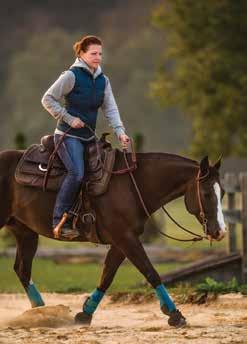



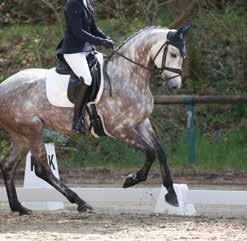
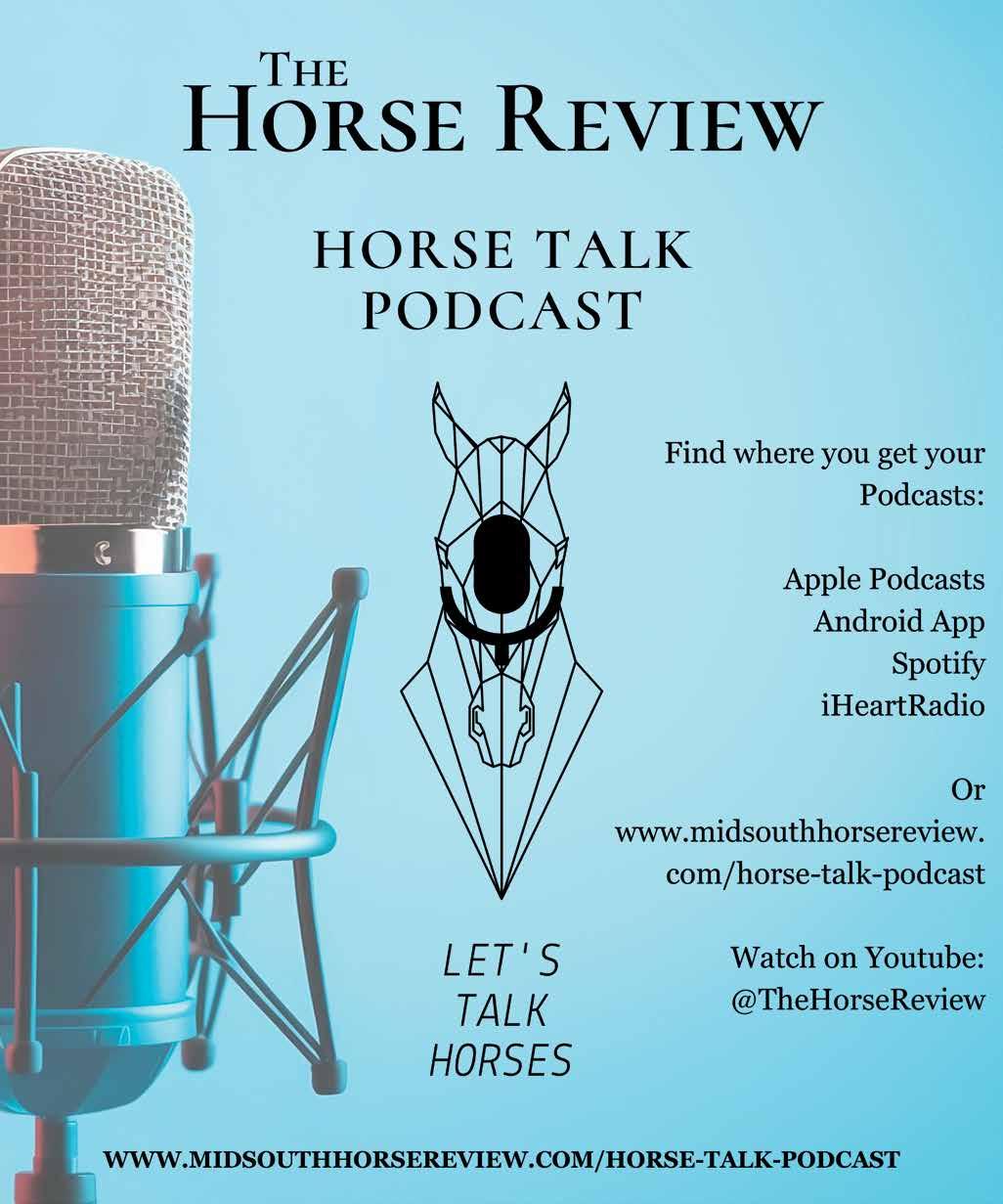
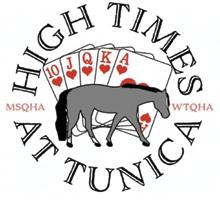 By Lauren Abbott
By Lauren Abbott
The MidSouth Quarter Horse Association and West Tennessee Quarter Horse Association will return to the Paul Battle Arena in Tunica, Mississippi for the “High Times at Tunica” Circuit April 19-21.
The versatility of the American Quarter Horse will be on display in a wide range of classes. Open classes for All Breed horses will be held as well. “High Times At Tunica” also introduced the “Just Wanna’ Go Show” Exhibitor Sponsorships for the cir-
cuit. The “Just Wanna’ Go Show” sponsorship package included: all entry fees, office fees, AQHA fees, stall and three bags of shavings for one horse. This allowed an abundance of exhibitors to take advantage of early entry options offering reduced show costs in the months leading up to the circuit.
The MidSouth Quarter Horse and West Tennessee Quarter Horse Associations are thankful for their 2024 sponsors. Sponsors include:
Gold Sponsors:
Down the Rail Promotions
Fortenberry Risk Management
Mike Gregory Training Stables
Lynn Doyle Flowers and Events
Mid-South Horse Review
Silver Sponsors
Dream Maker Realty
Masterson Farms, LLC
Pewter Sponsors
Boatwright Land Company
Kat Draughon
Kay Hardin
Vickie Pugh

SureStay Hotel
Ferguson Tack Store
Smith’s Farrier Service
Brent Smith Insurance Services, LLC
Michael Doyle, MidSouth Quarter Horse Association’s President is proud to have a wonderful group of sponsors and asks that everyone showing and watching this year’s “High Times at Tunica” to show support
for the outstanding businesses, partners and friends of MSQHA and WTQHA. To view the “High Time at Tunica” Show Bill visit the Midsouth Quarter Horse Association or West Tennessee Quarter Horse Association Facebook pages, http://www.midsouthquarterhorse.com, or call 901-301-4639 for more information.
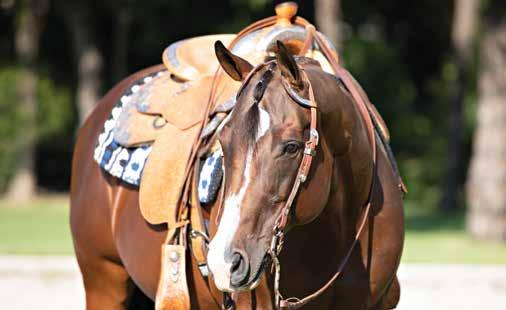
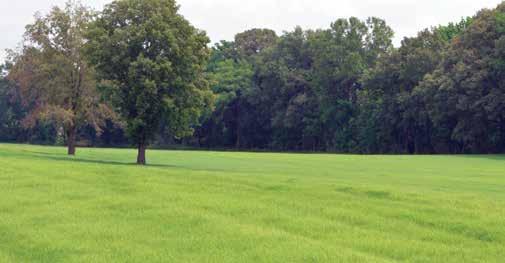


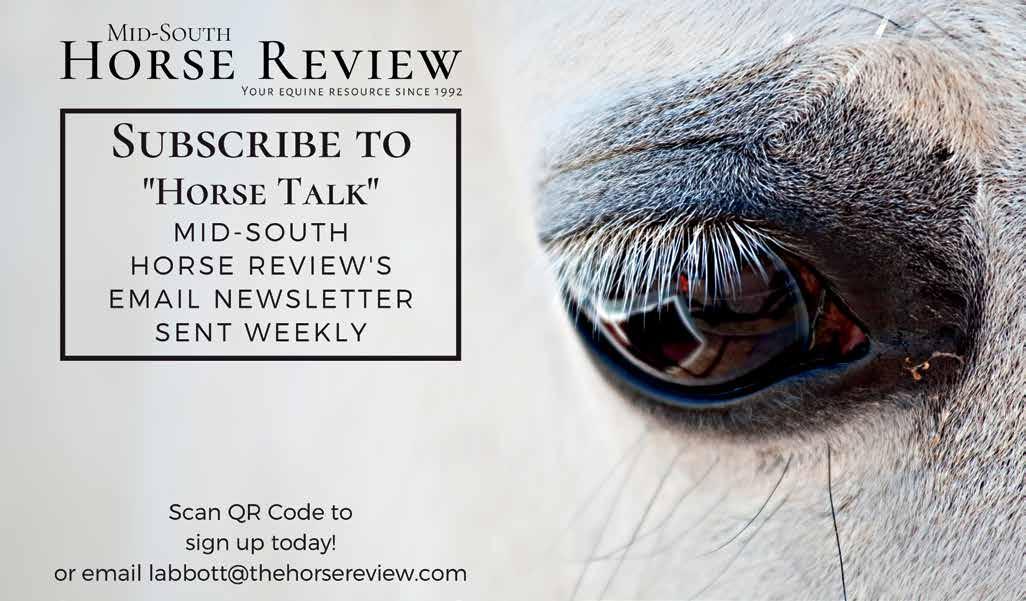

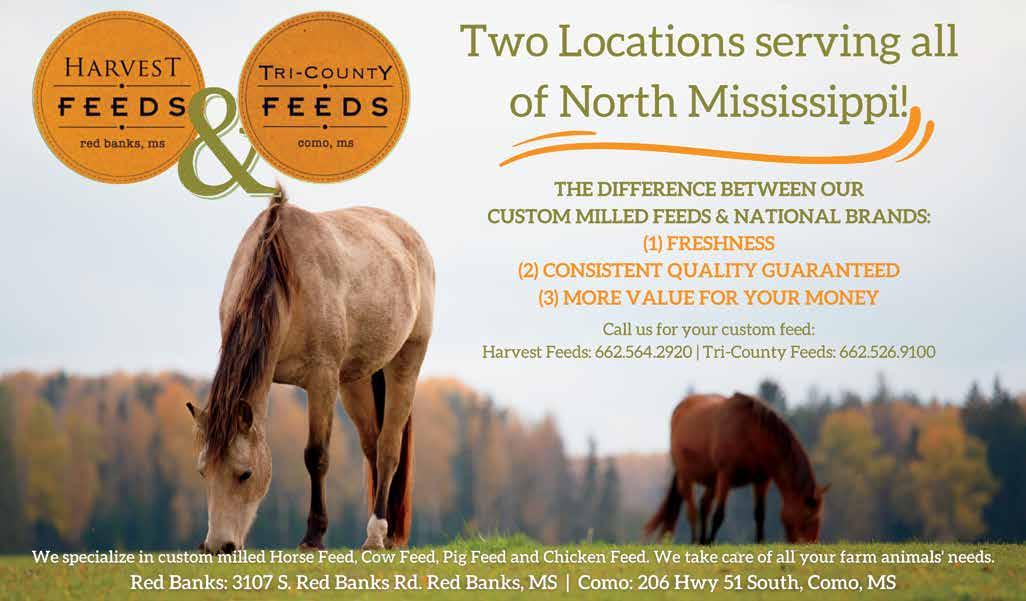
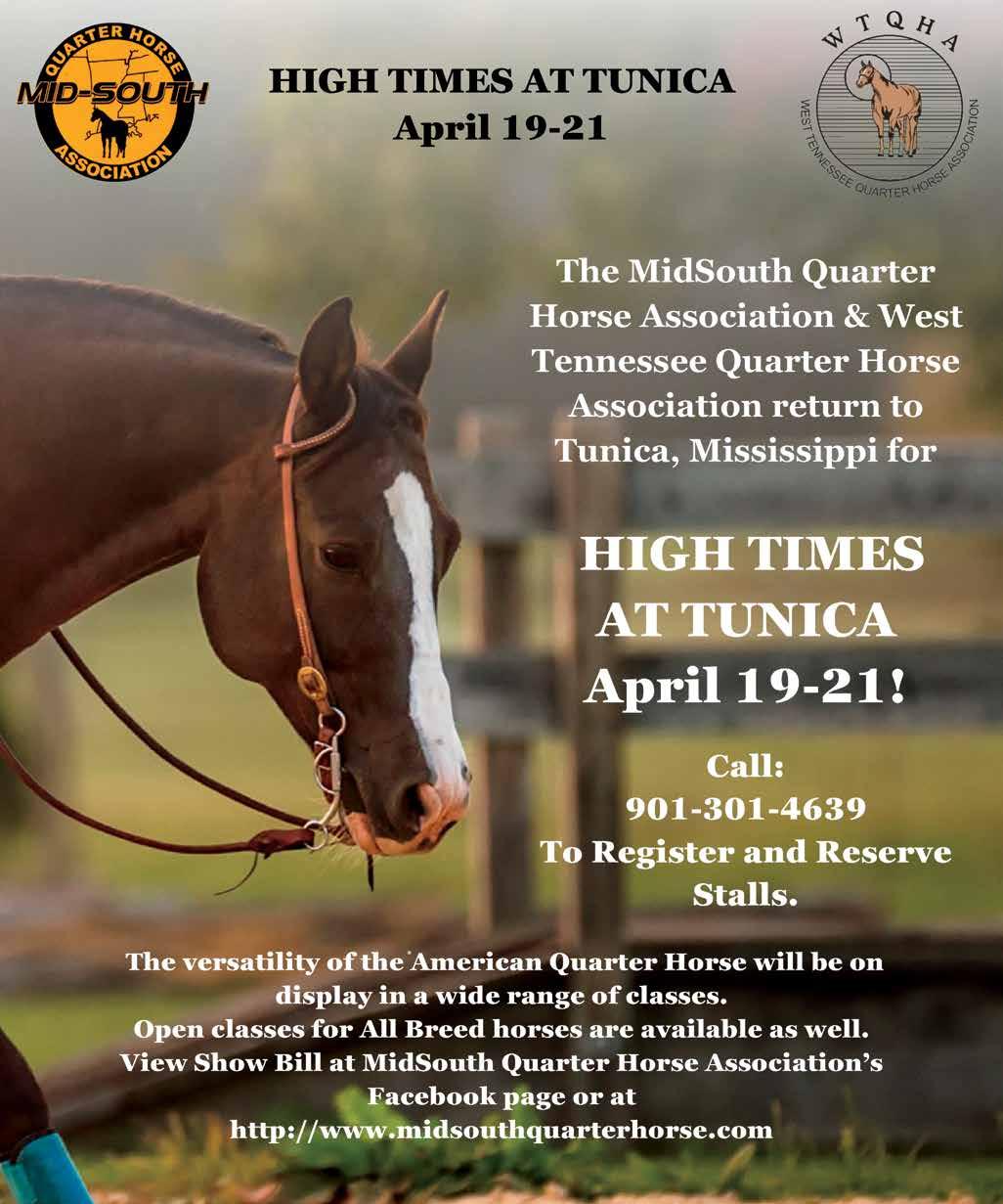
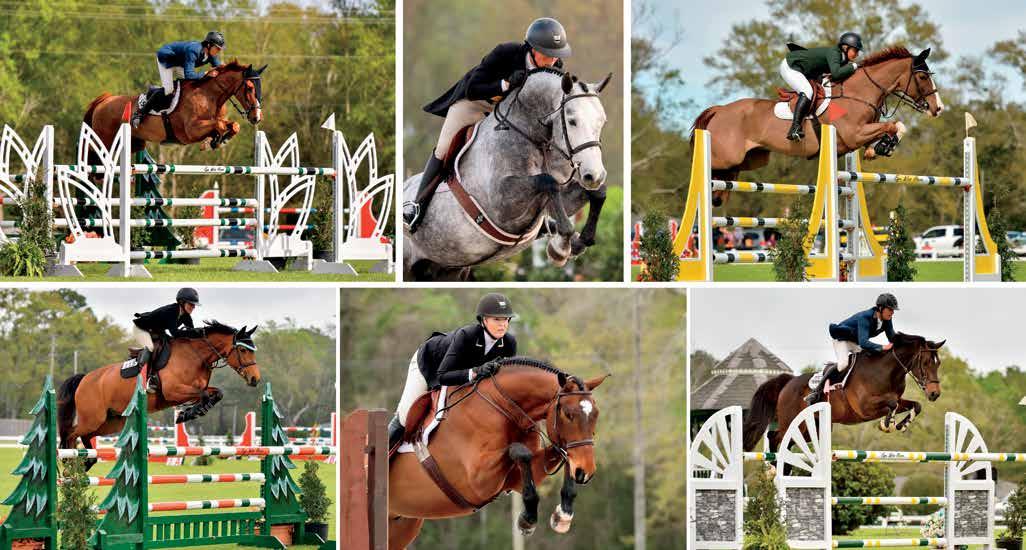
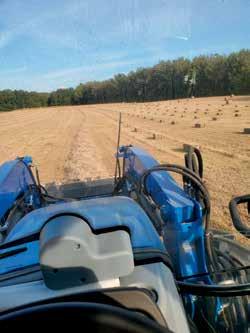

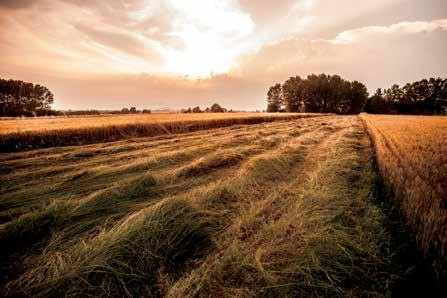

MIXED GRASS SQAURE BALES: $6.50
MIXED GRASS ROLLS, 4X5 NET, WRAPPED: $60
BERMUDA $9.50 ALFALFA $12
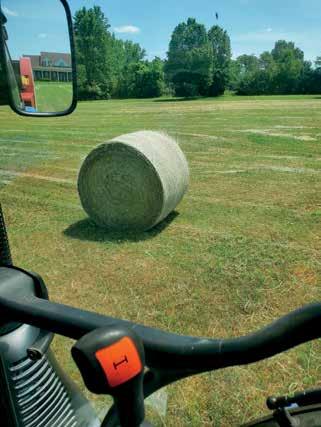

http://www.campusequestrian.com/ zone/5zone/5z2r/5z2r-index.html
http://www.ihsainc.com/events/
(901) 757-7777 ext.7106
http://www.agricenter.org/events/
April 5: - IBRA fundraiser Barrel Race for TNHSRA.
April 6-7: TN High School Rodeo with Tn & Ky Jr High & High School, April 13: Bill Pickett Rodeo, April 22-24: Volunteer Ranch Horse Assoc., May 2-5: Lucky Dog Barrel Race, May 17-19: Volunteer Ranch Horse May 23-27: Mid-South Cutting
www.gchs.org (901) 754-0009
April 4-7: WTHJA Springtime in Dixie
April 10-14: WTHJA Springtime Encore Starkville, MS (662)325-0508; (662)325-9350
https://mshorsepark.com/events
April 11- 14: Lucky Dog Barrel Race Roane State Community College, Harriman, TN
http://www.roanestateedu/?6497-Events-Calendar
April 5-7: SERHS Show
May 3-5: East TN Cutting Horse Assoc.
May 11-12: Peach State Miniature Horse Show
May 17-19: SERHS Show
Murfreesboro, TN www.mtsu.edu/tmc
April 5-7: TriStar Open Horse Show
April 13: Hwy 43 Auction Company Horse Auction
April 27-28: Grand Ole Horse Show
May 1-5: TQHA Lucky 7 Quarter Horse Show
May 9-11: WHOA Spring Extravaganza / Triple Crown Cleveland, TN 423-476-9310
www.tristateexhibitioncenter.org
April 5-6: Barrel Race
April 11: ETSA
April 19: Walking Horse Show
April 26-27 Alhambra Shrine Rodeo
May 3-4: NBHA
May 17-18: National Racking Horse Show
May 24-25: Smoky Mtn. Horse Show
May 30-June2: YEDA
Tunica, MS (662)363-3299 https:// tunicaarena.com/ https://www.facebook.com/TunicaArenaExpo/
April 19-21: MSQHA & WTQHA High Times at Tunica
May 17-19: Logo Ranch Prod. Barrel Race
http://www.ihsazone5region1.com
March 23-24: Western Semifinals, Murfreesboro, TN
Franklin, TN (615) 595-1227
https://www.agexpopark.info/calendar.php
May 16-18: Franklin Rodeo
www.nlbra.com, www. mslbra.org/schedule
https://www.mslbra.org/entry
MSLBRA Rodeo Schedule
April 13-14: MSLBRA, Brandon MS
# 17-18 - Rankin Co. Multi. Pavillion
April 20-21: Tennessee LBR - Columbia, TN - PJ Farms
April 27-28: MSLBRA, Brandon MS
# 19-20 - Rankin Co. Multi. Pavillion
April 27-28: Tennessee River LBR - Decaturville, TN -Triple P Arena
May 4-5: Tri-Star LBR - Lebanon, TN - James E Ward Ag Center
May 4-5: Calbra - Searcy, AR - White County Fairgrounds
May 12: Red River LBR - Texarkana, AR -Four ST. Fair & Rodeo Arena
May 18-19: Tennessee LBRColumbia, TN - PJ Farms
May 25: MSLBRA -Brandon MS
# 21 - Rankin Co. Multi. Pavillion May 26: Awards
(731) 658-5867
http://tnhsra.com
April 6-7: Memphis, TN (with TN/ KY Jr High & High School)
May 4-5: TN High School Rodeo, Holly Springs, Ms (www.tnhsra.com)
May 31-June 2: State Finals, Hyder-Burks Arena - Cookeville, TN
(731) 855-1860 https://wwwtennesseeyouthrodeo.org/ April 6: Guys, TN May 10-11: Selmer, TN
https://www.ponyclub.org/ Calendars/Events.aspx https://midsouth.ponyclub.org/calendar/ https://deepsouth.ponyclub.org/ https://middletennessee.ponyclub.org/calendar/ April 6: MTPC Mini Trial, Percy Warner Park, Nashville, TN April 7: Midsouth Show Jumping Rally, Percy Warner Park, Nashville, TN April 13: Hillsboro Hounds Hunter Pace, Lynnville, TN April 27: WTPC Hunter Pace, Saulsbury, TN
May 25-26: Regional Mounted Clinic, Percy Warner Park, Nashville https://blcc.church/
Sarah, MS. 548 Bryant Lane. Bryant Lane Cowboy Church. Info: facebook Wynne, AR. CR 381. Three Trees Cowboy Church. Info: threetreescowboychurch.com; facebook Collierville, TN. 1656 N. Col-Arl. Rd. Old West Special Trails. Sunday 10:30 am. Cordova, TN: Houston Levee Cowboy Church: Sundays at 4:30 pm at Houston Levee Community Center, 1801 N. Houston Levee Rd. in Cordova, followed by Open Arena at Circle C Arena next door behind Calvary Church. Visit HoustonLeveeCowboyChurch.com or call 901-355-3204 for more information.
FIRST SATURDAY: Houston, MS. Triple E Livestock. Tack 10 am. Horses 2 pm. Info: A.J. Ellis 662-401-9760; 662-266-2808
FOURTH SATURDAY: Holly Springs, MS. Marshall County Fairgrounds. Marshall Co. Livestock Exchange. 662-317-9021
First, Third, Fifth Saturday:Dunlap, TN. American Made Livestock Market. Tack 3pm. Horses 6pm. Info: (423) 447-8119
FIRST SATURDAY: Hattiesburg, MS. T. Smith Livestock Sales. Tack 10:30 am. Horses 1:30 pm. Info: 601-583-0828
SECOND SATURDAY: Gleason, TN. West TN Auction Barn. 330 Fence Rd. Tack 5:30 pm. Horses 8:30 pm. Info: Chucky Greenway 731-571-8198
https://www.appaloosa.com/showcalendar
May 4: Arkansas Classic May Show - Pine Bluff, Arkansas
http://www.nbha.com; https:// ibra.us/shows/US-TN-WEST
May 31-June 2: Future Fortunes 50,000 Super Tour, Memphis, TN
http://useventing.com; www.river-glen.com
https://panthercreekstables. com/competition-calendar/
April 6: Panther Creek Stables Minitrial, Nesbit, MS
https://americanfield.com/calendar
https://americanfield.com/calendar
April 1: ABHA Midwest Open Walking Shooting Dog Championship, Camden, SC
April 3: ABHA National Free-ForAll Championship, Camden, SC
April 5-7: United States Amateur AllAge Derby Invitational, Dancyville, TN
www.gulfcoastclassiccompany.com
April 4-7: Springtime in Dixie, Germantown, TN
April 10-14: Springtime Encore, Germantown, TN
April 17-21: Spring I, Brownland Farm, Franklin, TN April 24-28: Spring II, Brownland Farm, Franklin, TN May 4: No Frills 1, Brownland Farm, Franklin, TN May 5: No Frills 2, Brownland Farm, Franklin, TN May 18-12: Memphis in May II, Germantown, TN May 22-26 Nashville Country, Brownland Farm, Franklin, TN
May 29-June 2: Nashville Classic, Brownland Farm, Franklin, TN
www.mqha.org, www.wtqha.org, www.midsouth quarter horse.com, facebook Mid-South Breeders
April 18-21: High Times in Tunica
www.nationalsteeplechase.com, https://www.oaklawn.com/racing/calendar/ , https://www.keeneland.com/ www.national steeplechase. com, April 5: Central Bank Ashland (G1) Stakes, Keeneland Racing
April 5: Transylvania (G3) Stakes, Keeneland Racing
April 5: Lafayette Stakes, Keeneland Racing
April 6: Toyota Blue Grass (G1) Stakes, Keeneland Racing
April 6: Madison (G1) Stakes, Keeneland Racing
April 6: Appalachian (G2) Stakes, Keeneland Racing
April 6: Shakertown (G2) Stakes, Keeneland Racing
April 6: Commonwealth (G3) Stakes, Keeneland Racing
April 6: Rainbow Stakes, Oaklawn Racing
April 6: Rainbow Miss Stakes, Oaklawn Racing
April 7: Beaumont (G2) Stakes, Keeneland Racing
April 7: Palisades (L) Stakes, Keeneland Racing
April 12: Maker’s Mark Mile (G1) Stakes, Keeneland Racing
April 12: FanDuel Limestone (L) Stakes, Keeneland Racing
April 13: Jenny Wiley (G1) Stakes, Keeneland Racing
April 13: Stonestreet Lexington (G3) Stakes, Keeneland Racing
April 13: Giant’s Causeway (G3) Stakes, Keeneland Racing
April 13: Apple Blossom Handicap Stakes, Oaklawn Racing
April 13: Count Fleet Sprint Handicap Stakes, Oaklawn Racing
http://wthja.com, www.brownlandfarm. com, www.mthja.com, www.ethja.org
April 19: Baird Doubledogdare (G3) Stakes, Keeneland Racing
April 20: VisitLEX Elkhorn (G2) Stakes, Keeneland Racing
April 20: Ben Ali (G3)
Stakes, Keeneland Racing
April 20: Oaklawn Handicap Stakes, Oaklawn Racing
April 20: Bathhouse Row Stakes, Oaklawn Racing
April 20: Valley of the Vapors Stakes, Oaklawn Racing
April 26: Bewitch (G3)
Stakes, Keeneland Racing
April 27: Bachelor Stakes, Oaklawn Racing
April 27: Dig A Diamond Stakes, Oaklawn Racing
May 3: Lake Ouachita Stakes, Oaklawn Racing
May 3: Natural State Breeders’ Stakes, Oaklawn Racing
May 4: Arkansas Breeders’ Championship Stakes, Oaklawn Racing
May 4: Lake Hamilton stakes, Oaklawn Racing
www.americanranchhorse. net, www.volrha.com
March 23-24 MRHA, Marshall County Fairgrounds, Holly Springs, MS
April 5-7: SRHA, Roane State, Harriman, TN
April 27-28: MRHA, Montgomery County Coliseum, Winona, MS
May 17-19: Southeast Ranch Horse Series, RSCC, Harriman, TN
May 25-26: MRHA, Marshall County Fairgrounds, Holly Springs, MS
www.ipra-rodeo.com, www.prorodeo. com, www.lonestarrodeocompany.com
https://calvarychurch.net/cowboychurch
May 4: Houston Levee Cowboy Church
Facebook: Ingram Mills Saddle Club. Holly Springs, MS. Marshall Co. Fairgrounds.
Cook’s Lake Saddle Club. 4269 N. Watkins, Memphis, TN. Info: Wes (901) 570-3595. Cookslakesaddleclub.com
Woodstock Cuba Saddle Club. 7211 Woodstock Cuba Rd. Millington, TN. Info: John (901) 412-0327. mywcsc.com
SUBMIT YOUR EVENTS TO INFO@ MSHORSEREVIEW.COM


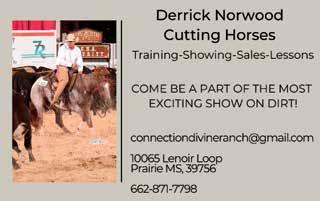
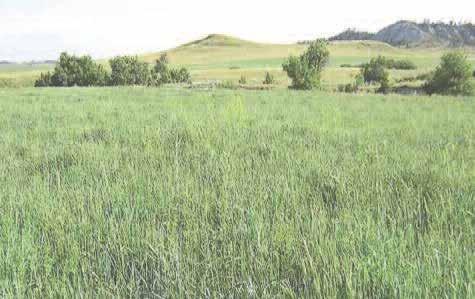
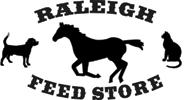
901-386-0923
Scott

Leigh Ann Carkeet
Speci alizin g in Equestrian Properties ©MSHR



901-550-8892

leighanncarkeet@gmail com

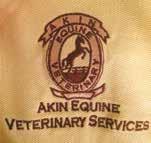
MARK A. AKIN , DVM
Practice limited to Lameness and Performance Issues associated with the Equine Athlete
By appointment only : 601-813-1128 cell 901-854-6773 (85-HORSE)
MAkindvm86@gmail.com ©MSHR

750 New Hope Road Ripley, TN 38063
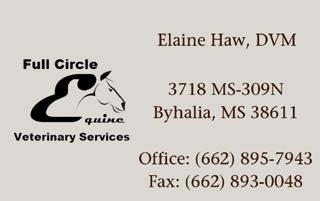
FARM: Located on 40 acres in northeast Shelby County at 10023 Rosemark Rd. Full Board $450/month. Board includes stall cleaning/shavings and morning/evening feedings.
Numerous amenities include large stalls with windows, stall fans, heated waterers, turnout pastures, lighted outdoor arena or inside barn riding, crosstie area with hot/cold wash rack, fly spray system, Bermuda hay grown and baled onsite. Gated facility with owners and farm manager living on property. Call Sammy 901-833-3075.
Located in Eads, TN on a quiet and beautiful drive. Our beautiful farm welcomes all disciplines. Board includes horses fed 2x per day, large stalls cleaned once daily, stall fans, turnout pastures, lighted outdoor arena with excellent footing, a spacious crosstie area for up to 6 horses with hot/cold wash racks. Beautiful tack room with custom cabinet built-ins. Barn manager has over 40 years of experience caring for horses. Friendly and supportive barn culture. Training available in English and Western disciplines with a focus on Horsemanship. Schedule a tour by texting 901-279-4634


Lakeland 14 stall barn for rent. Wash rack, feed/tack room and hay storage. $1,500/month for the entire barn or $125/month per stall (3 stall minimum). Non public use only.
Nice barn apartment for rent: $700 a month. 901 -338- 9686.
Lakeland 3 acre pasture with 3 stall barn for rent. 2 horses maximum. $250/month. 901 -338- 9686
Premier Horse Boarding in Fayette County: Full/pasture board. Retired horses are welcome. Private pastures, grained 2x daily w/senior feed & Bermuda hay. All weather outdoor arena w/ lights. 50+acres of riding, lots of additional amenities. Look us up on FB. Blues City Warmbloods Dana 901-331-3500
Horse-drawn carriage drivers needed in Downtown Memphis. We will train. No experience necessary. (901) 496-2128. uptowncarriages. com
SALES POSITION- Seeking High Energy, self starter to build prospect lists and meet with horse industry business owners to sell high quality equine related products and services. Text: 901-279-4634 to learn more about position.
Part- Time Social Media & Marketing Coordinator Needed. Help horse business with organizing social media and email newsletters. Required hours: 10 MIN- 20 hours MAX per week in office located in Eads, TN. happymemphishorses@gmail.com
Training your horse, the correct & gentle way. Desensitizing & teaching respect on the ground; trust without fear. We mostly use the Buck Brannaman training methods. Exc. References. Grained 2 x day w/ Bermuda hay & private pastures. $800 Mo. Michael Garner 901-857-8060 Blues City Warmbloods on FB


